Online Phonics Training Letters and Sounds
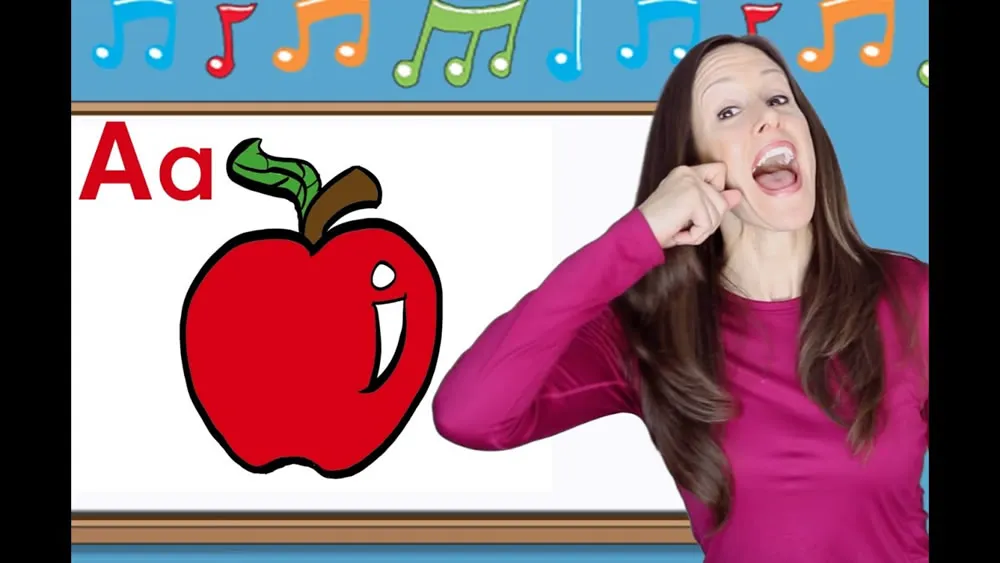
Source: ytimg
Online Phonics Training Letters and Sounds
In today’s digital age, the power of online learning has opened up a plethora of opportunities for educators and learners alike. One such avenue is the “Online Phonic Training Letter Sound” offered by Vidhyanidhi Education Society (VES). Phonics, an essential foundation stone in early literacy, focuses on the relationship between letters and their corresponding sounds. When taught effectively, it can significantly boost reading and writing skills.
Let’s break down what this Online Phonic Training Letter Sound encompasses:
Customized Learning Paths
Tailored modules that cater to both beginners and advanced learners, ensuring that every individual grasps the nuances of phonics at their own pace.
Interactive Tools
Engaging multimedia tools and resources that make learning not just informative but also fun and interactive.
Expert Insights
With input from seasoned educators, the training covers both theoretical knowledge and practical application, bridging the gap between learning and teaching.
Flexibility and Accessibility
Being online, the training offers the advantage of learning anytime, anywhere, making it convenient for educators, parents, and even enthusiasts who wish to strengthen their understanding of phonics.
Through this Online Phonics Training Letters and Sounds, Vidhyanidhi Education Society aims to equip every learner with the skills and confidence needed to master phonics, thus paving the way for enhanced reading proficiency. By understanding the intricacies of letters and sounds, we can set the stage for lifelong learning and a love for reading.
Table of Content
- Importance of Phonics
- Career Opportunities for Phonics Teacher
- Phonics Teaching Courses Online
- Phonics Course Syllabus
- Structure of Phonics Teachers Training Course
- Duration of Online Phonics Training Letters and Sounds
- Eligibility For Phonics Teachers Training Course
- Phonics Teacher Salary
- Phonics Course Fees
- How to Teach Satpin?
- How to Teach Phonics to Class 1?
- What are the Beginning Sounds?
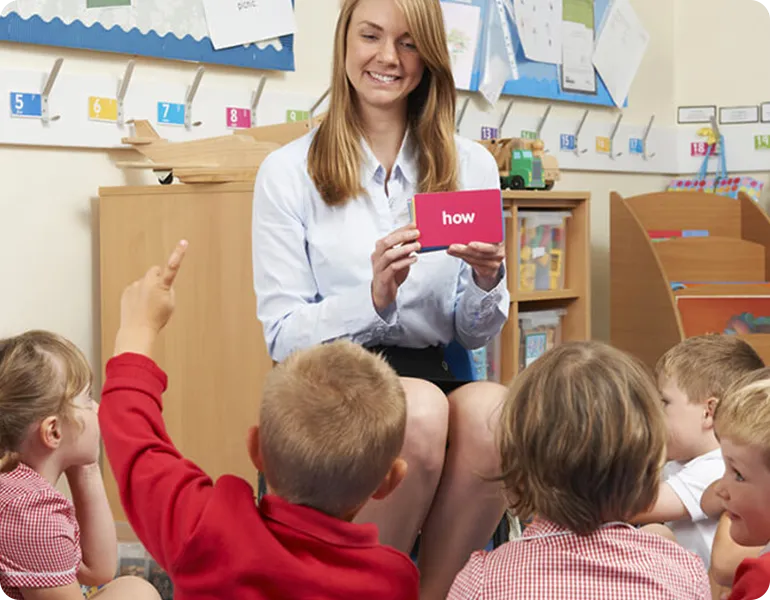
Source: homepageslearning
Importance of Phonics
The English alphabet, while fundamental to language learning, is riddled with intricacies. Phonics seeks to simplify this complexity by focusing on the sounds each letter makes.
Importance of Phonics:
Sound Foundation
English letters often sound different than their names. Phonics introduces children to these sounds directly.
Reading Skills
By learning the sounds, children can effortlessly piece them together to read words.
Spelling Proficiency
Recognizing sounds within words enables children to segment them for spelling purposes.
Holistic Language Development
Phonics ensures that reading, spelling, and writing develop simultaneously.
Efficient Learning
Teaching through letter sounds has been shown to yield better outcomes for learners.
Career Opportunities for Phonics Teacher
The realm of phonics education, especially when coupled with Online Phonics Training Letters and Sounds from Vidhyanidhi Education Society (VES), offers a plethora of career prospects.
Dive into the Career Opportunities for Phonics Teacher:
- Launch your own phonics-based sessions right from the comforts of your home, demanding minimal investment with ample earnings.
- Tuition teachers can expand their teaching subjects by introducing phonics to their existing students.
- Schools, especially focusing on pre-primary and primary education, are consistently on the lookout for qualified phonics instructors.
- Present school educators can broaden their horizons by incorporating phonics, leading to further growth and advancement in their profession.
- Institutes offering Online Phonics Training Letters and Sounds globally often seek phonics experts to elevate their training modules.
- Those in the educational sector can explore roles as phonics curriculum designers or content creators in globally recognized educational firms.
- Experienced phonics instructors can scale up to leadership positions like principals or center heads in specialized learning centers.
- There’s an avenue for phonics specialists to support children with learning challenges as shadow or remedial instructors.
- Online Phonics Training Letters and Sounds not only enhances a professional horizon but also enriches parenting, helping parents foster linguistic growth in their children.
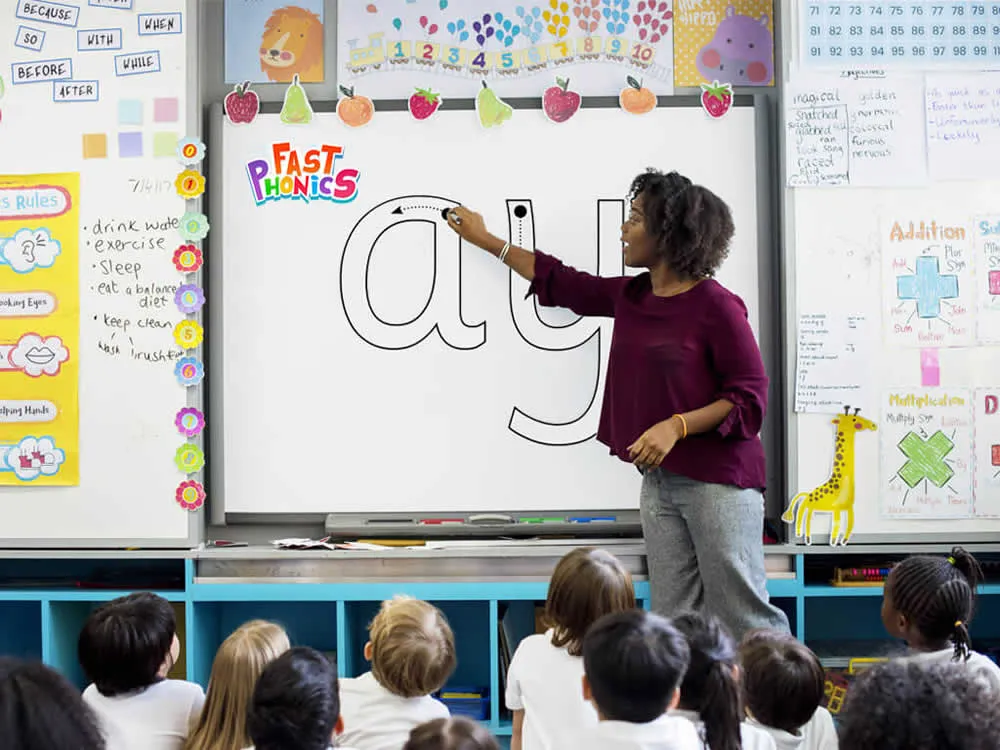
Source: assets
Need further info on Online Phonics Training Letters and Sounds? Call our course coordinator: +919869546913 / +919869866277.
The brochure is available for Download.
Phonics Teaching Courses Online
When considering Online Phonics Training Letters and Sounds in India, Vidhyanidhi Education Society (VES) stands out for its unparalleled online offerings.
The merits of Phonics Teaching Courses Online at VES include:
- Year-round availability for enrollment.
- Affordable Online Phonics Training Letters and Sounds course pricing.
- Streamlined registration process.
- Accessibility from any global location.
- Only a good internet connection eliminates the need for daily travel.
- Easy, self-explanatory course materials.
- A downloadable and printable study kit in PDF format.
- Included in the study kit are a teacher’s handbook, over 400 worksheets, 40+ colored flashcards, and helpful audio-video materials.
- Interactive online class sessions.
- Highly knowledgeable trainers.
- Relaxed assessment procedures.
- The certificate doesn’t specify the mode of study.
- Home delivery of certificates.
- Globally recognized certification.
Phonics Course Syllabus
The Online Phonics Training Letters and Sounds Course at VES are crafted by experts after rigorous research of genuine sources and a study of current teaching methodologies. The Phonics Course Syllabus is a harmonious blend of time-tested principles and hands-on techniques.
It includes:
- Explaining Phonics
- Varieties of Phonics programmes
- Comparative study of the Whole Language Approach with Phonics
- Familiarizing with Letter Sounds and Formation
- Techniques of Blending and Segmenting
- Basics of Beginning and Ending Consonant Blends
- Introduction to Digraph sounds
- Clarifying the Contrast between Digraphs and Blends
- Understanding Tricky words
- Guidelines of Phonics Rules
- Exploring Alternative Vowel Sounds and their Spellings.
Structure of Phonics Teachers Training Course
At VES, our Phonics Teachers Training Course is designed for ease and clarity. Our simple Structure of Phonics Teachers Training Course ensures ease from start to finish.
- Contact us
- Get to know our program
- Sign up
- Join the session
- Take the test
- Get your certification
- Begin your Phonics teaching journey
- Celebrate!
Duration of Online Phonics Training Letters and Sounds
The Duration of Online Phonics Training Letters and Sounds is six days, with each session lasting about three hours, totaling 18 hours.
Eligibility For Phonics Teachers Training Course
For Eligibility For Phonics Teachers Training Course, an individual simply needs a functional understanding of the English language.
Phonics Teacher Salary
The Phonics Teacher Salary largely depends on the school’s location and compensation policy, the qualifications and experience of the teacher, and current industry standards. However, a certified phonics teacher can typically earn a five-figure salary without much hassle.
Phonics Course Fees
VES offers phonics courses with incredibly affordable Phonics Course Fees, much lower than typical market prices. Plus, they provide numerous discount options and flexible payment methods.
How to Teach Satpin?
“SATPIN” refers to a sequence in which some phonics programs introduce the first set of letter sounds to children. It is a part of systematic synthetic phonics instruction, a method used primarily in early reading education. “SATPIN” is an acronym for the initial sounds taught: s, a, t, p, i, and n.
Here’s a step-by-step guide on How to Teach Satpin:
Introduction
Start by explaining that every letter has a sound, and you’re going to learn some of them together.
Teach one sound at a time
Begin with the letter “s”. Show the letter, say the sound (/s/ as in snake), and then ask the child to repeat it.
Use visual aids like flashcards or pictures of objects that start with the sound.
Gradually introduce the other sounds in the sequence: a, t, p, i, n.
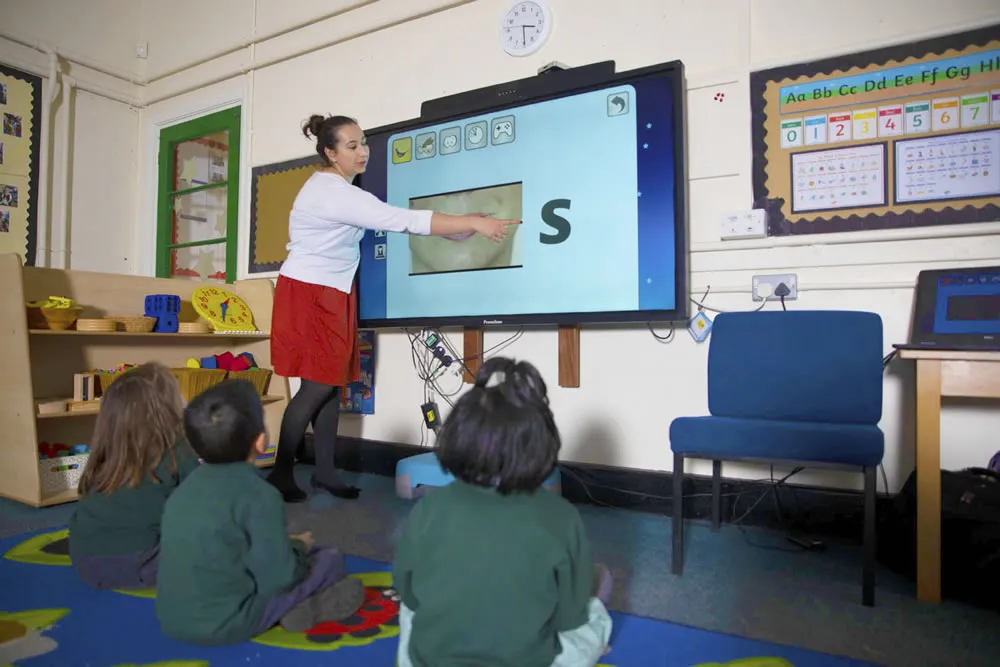
Source: phonicshero
Physical activity
Incorporate physical movement. For instance, have kids form the shape of the letters with their bodies or trace the letters in the air.
Need further info on Online Phonics Training Letters and Sounds? Call our course coordinator: +919869546913 / +919869866277.
The brochure is available for Download.
Blending
Once the child is familiar with a few sounds, start blending them. For instance, after teaching ‘s’, ‘a’, and ‘t’, you can form the word “sat”.
Sound it out slowly at first: /s/… /a/… /t/… sat.
Segmenting
This is the opposite of blending. You say the word, and the child breaks it into its sounds. For example, for “sat”, the child would say /s/, /a/, /t/.
Practice with games
Use board games or online games focused on phonics.
You can play “I spy” using sounds: “I spy something that begins with /a/.”
Reading books
Use decodable books that emphasize the sounds you’ve taught. These are often called “phonics readers.”
Writing practice
Encourage children to write the letters and the simple words they’ve learned. This reinforces their learning.
Consistent review
Like any new skill, frequent and consistent practice is key. Revisit sounds they’ve already learned to ensure retention.
Real-world application
Point out objects in the child’s environment that start with the sounds they’ve learned.
Positive reinforcement
Praise and reward the child for their effort and success. This motivates them to work hard and continue learning.
Proceed at the child’s pace
Every child is different. Some may grasp the concepts quickly, while others may need more repetition. Adjust your teaching based on the child’s needs.
Introduce new sounds
Once the child is confident with SATPIN, you can introduce new sets of sounds, continuing their phonics education.
Remember, the goal of teaching “SATPIN” is to lay a foundation for reading. It’s essential to make the experience enjoyable and engaging for the child, so they develop a positive association with reading from the beginning.
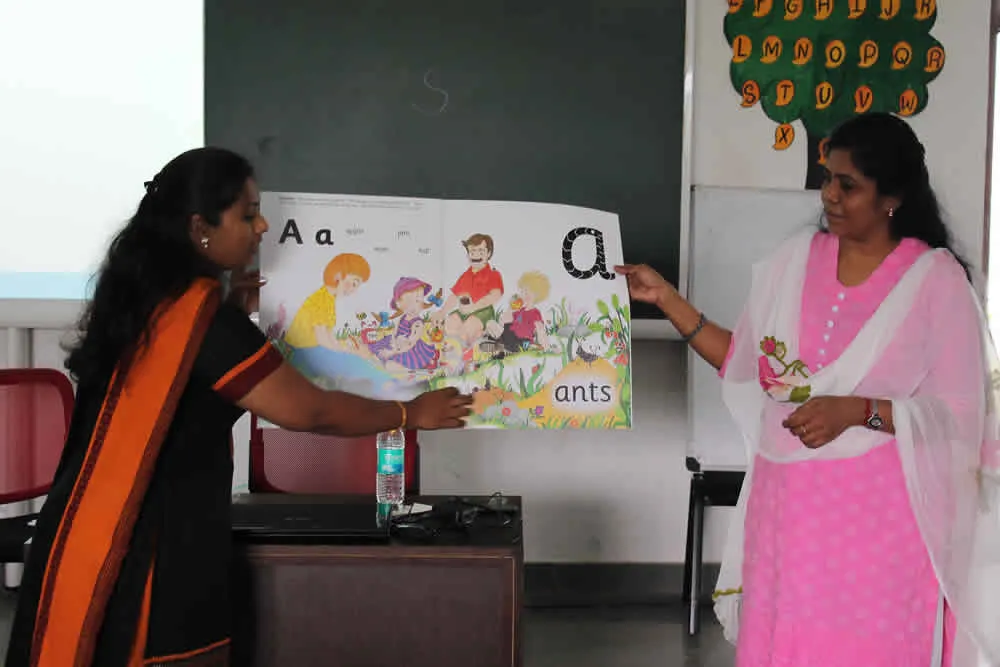
Source: phonicspower
How to Teach Phonics to Class 1?
Teaching phonics to Class 1 students requires a systematic approach, patience, and engaging activities that cater to their developmental stage.
Here’s a step-by-step guide on How to Teach Phonics to Class 1:
Start with Letter Sounds
Start with introducing the sounds of the 26 letters of the alphabet.
Teach the consonant sounds first, as they’re generally more straightforward.
Teach the short vowel sounds next.
Use Visual Aids
Use flashcards, posters, or interactive board displays.
Associate each sound with an image (e.g., ‘a’ for apple, ‘b’ for ball).
Incorporate Actions
Children often learn best when movement is involved.
Use actions to represent each sound (e.g., miming an action of biting an apple for ‘a’).
Blend Sounds into Words
Start with two-letter (VC) words such as ‘at’, ‘it’, ‘up’ etc.
Gradually introduce longer words, emphasizing the blending of individual sounds to form the word.
Word Families
Once students are comfortable with blending, introduce word families (e.g., -at family: cat, bat, rat).
This reinforces the concept of blending and helps with word recognition.
Interactive Activities
Games: Play games like bingo, memory, or matching games using phonics sounds or words.
Reading: Use decodable books that focus on specific phonics patterns.
Writing: Encourage students to write words or sentences using the phonics patterns they’ve learned.
Phonemic Awareness Activities
Rhyming: Identify and generate rhyming words.
Segmenting: Split words into their respective sounds.
Blending: Combine individual sounds and form words.
Introduce Diagraphs and Trigraphs
After students master single sounds, introduce sound combinations like ‘sh’, ‘ch’, ‘th’, ‘igh’ etc.
Consistent Practice
Daily practice is essential. Even if it’s just for a few minutes, it’s crucial to review and reinforce previously learned sounds and patterns.
Use worksheets, online resources, and reading materials that focus on phonics.
Assessment & Feedback
Regularly assess students to gauge their understanding.
Provide immediate feedback to correct mispronunciations or misunderstandings.
Reading Aloud
Read daily to your students.
This exposes them to rich vocabulary and helps them hear the sounds in context.
Family Involvement
Encourage families to practice phonics at home.
Share resources, tips, and reading lists with parents.
Remember, every child is unique and might progress at a different rate. It’s essential to differentiate instruction to cater to individual needs, provide ample encouragement, and create a positive learning environment where mistakes are seen as learning opportunities.
What are the Beginning Sounds?
“Beginning Sounds” refer to the initial phonemes or sounds in words. They are often a focus in early reading and phonics instruction because recognizing and differentiating between these sounds is essential for developing decoding and encoding (spelling) skills.
For instance, the word “bat” begins with a /b/ sound, whereas the word “cup” begins with a /c/ sound (in this case, pronounced as /k/).
Teaching children to identify Beginning Sounds can involve several activities:
Listening for the Initial Sound
Say a word and have the child identify or repeat the first sound they hear.
Picture Matching
Show the child a series of pictures and have them group them by the initial sound. For example, “dog,” “duck,” and “drum” would all go together because they start with the /d/ sound.
Letter Matching
Once children are familiar with the alphabet, you can have them match the beginning sound they hear in a word to the corresponding letter. For instance, if you say “ball,” the child would select or point to the letter ‘b’.
Songs and Rhymes
There are many phonics songs and rhymes that highlight initial sounds, making the learning process fun and engaging.
Books
Numerous beginner reading books emphasize beginning sounds. Reading these with children can further reinforce their understanding.
Recognizing Beginning Sounds is just one component of phonemic awareness, which is the ability to hear and manipulate the individual sounds in words. As children develop their reading skills, they will also work on recognizing middle (medial) and ending sounds, blending sounds to read words, and segmenting words into their sounds to spell or write.
Online phonic training letter sound
Shape futures with phonics mastery at Vidhyanidhi!
Need further info on Online Phonics Training Letters and Sounds? Call our course coordinator: +919869546913 / +919869866277.
The brochure is available for Download.
FAQ
What are the blends in Phonics?
In Phonics, blends are combinations of two or more consonants that are pronounced, like "st" in "stop" or "bl" in "blue". Recognizing blends helps in fluent reading.
How to teach CVC words to Kindergarten?
To teach CVC words to kindergarten: Start with individual letter sounds. Combine consonant-vowel, then add the final consonant. Practice with simple words like "cat" and "dog".
How to learn Phonics Sounds?
To learn Phonics Sounds: Start with individual letter sounds, then digraphs & blends. Practice with words & sentences. VES offers the finest curriculum for mastering these sounds!




